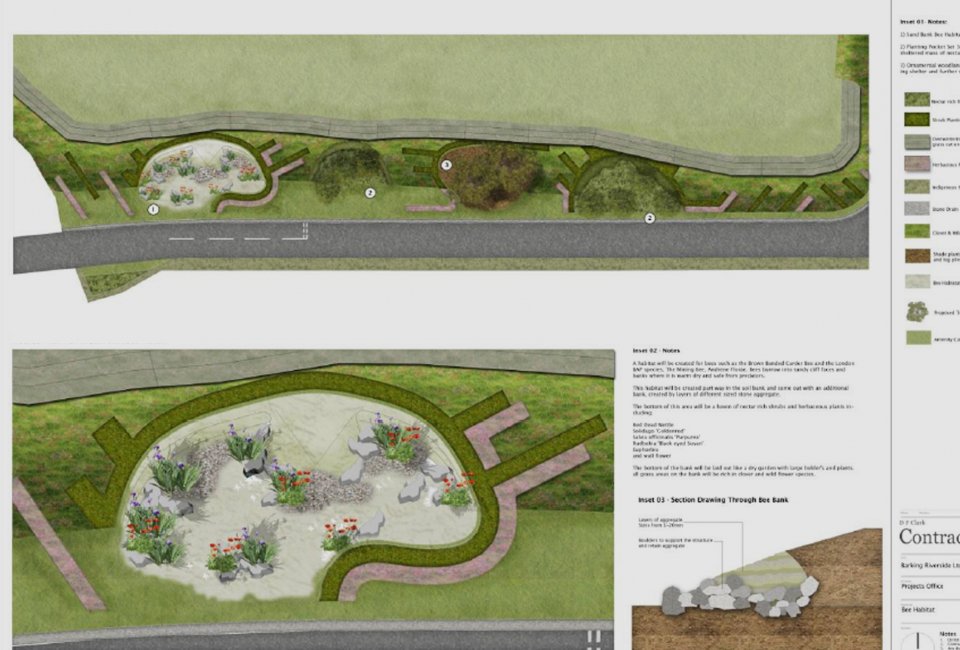
Informing Barking Riverside's green space design by incorporating regional biodiversity.
The Project
The Goal
By supporting the design of Multifunctional Green Infrastructure in the Barking Riverside development project, the pilot aims to ensure the protection and conservation of nationally important biodiversity.
Local task force
University of East London (UEL), is acting as the leading organisation in the project. UEL has strong ties with the local authority (the London Borough of Barking and Dagenham), National Statutory Agency for the Natural Environment (Natural England), local business (Barking Riverside Ltd) and local expertise such as DF Clarke (landscape architects) and the Green Roof consultancy (green roof designers). These connections allowed for the facilitation of the project components and achieving its goals and objectives.
The process
The project was realized after a series of investigations and experimentation on the mechanisms to design green infrastructures were conducted at the Barking Riverside Development. The aim was to maximize biodiversity in the upcoming projects.
Existing dynamics
The project was built on an existing knowledge transfer partnership, which was looking at the ecosystem service costs of moving from industry standard green roofs to biodiverse green roofs. Numerous other pilots emerged from this partnership. This included a broader roll out of biodiverse green roofs, greater consideration for the types of habitats that can be created at roof level, biodiversity monitoring on Olympic Park green roofs, feeding in the principles of Ecomimicry into Sustainable Drainage Systems Guidance (London Borough of Tower Hamlets) and redesigning social housing estate (Poplar HARCA). The results of the project were fed back to local authority planners and to Natural England.
Obstacles
The project faced some obstacles mainly related to the progression of the project, this was affected by site management and pace of development issues. In order to mitigate these obstacles, the planning authority should have strict monitoring plans, and formal communication platforms and timelines should be established with the developers.
Resources
The main resources needed for the implementation of the project were financial resources to support the project and the land where the project was carried out. Ecological expertise, as well as landscape design expertise, was needed to consult on issues related to the site.
Strokes of luck
London Borough of Barking and Dagenham had already established a strong relationship with the University of East London and the developers, which allowed for better management and implementation of the project. Also, establishing working relationships with professionals open to new ideas helped to take the project forward.
The achievements
Short term results
Improved green infrastructure design, appropriately designed to comply with the requirements of the location and the development project.
Long-term benefits
The London Borough of Barking and Dagenham promotes the project as a good example of climate change adaptation that can increase urban resilience. The project experimental work and results have contributed to the creation of masterplans and landscape design plans that take into consideration climate change adaptation mechanisms and aim to maximize biodiversity on the chosen sites.
Key lessons learned
Stuart Connop, UEL:
"In order to successfully implement Ecomimicry it is important to set up a co-development process that includes numerous stakeholders and multiple expertise. Understanding the local ecological environment and obtaining design expertise in green infrastructures are critical for securing the support of developers. A participatory approach that includes different stakeholders with different backgrounds in the implementation is considered highly essential."
